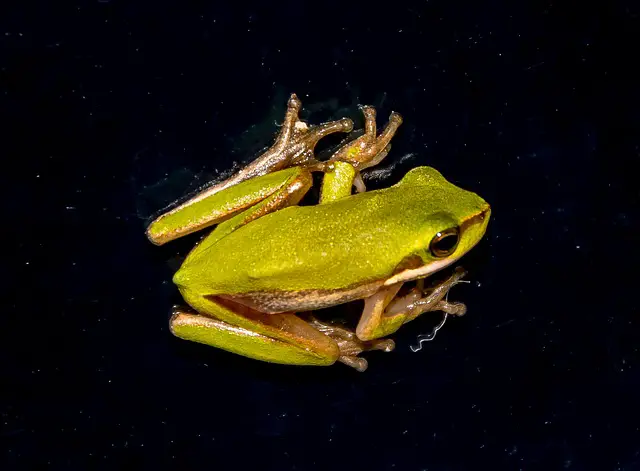If you’ve just gotten an African dwarf frog (or two) and you’re noticing that they’re biting each other, you may be wondering what’s going on. Why do they do this? Is it harmful to the frogs? In this article, we’ll explore the reasons why African dwarf frogs bite each other and what you can do to prevent it.
Introduction
African Dwarf Frogs are popular pets, known for their docile nature and small size.
However, some owners may be surprised to find their frogs biting each other. There are several possible reasons for this behavior.
In some cases, it may be a sign of aggression, especially if the frogs are of different sizes or if one frog is significantly more active than the other.
Biting can also be a sign of stress, caused by changes in the environment or the addition of new tank mates.
If your frogs are biting each other, it’s important to closely observe their behavior and consult with a reptile expert to determine the cause. With proper care, African Dwarf Frogs can make enjoyable and low-maintenance pets.
African dwarf frogs are social creatures
African dwarf frogs are social creatures that enjoy being in groups. In the wild, they live in large colonies where they interact with other frogs. They also benefit from the safety that comes from being in a group.
African dwarf frogs are very active and playful, and they enjoy having other frogs to play with. In captivity, African dwarf frogs should be kept in groups of at least four frogs.
This will allow them to interact with other frogs and prevent them from getting bored. African dwarf frogs are very sensitive to changes in their environment, so it is important to create a stable environment for them.
When keeping African dwarf frogs in captivity, it is important to provide them with suitable habitat, plenty of hiding places, and plenty of food.
When African Dwarf frogs are in a group, they establish a hierarchy with a dominant frog
The dominant frog is typically the largest and most aggressive frog in the group. The other frogs will follow the lead of the dominant frog and defer to its authority.
This hierarchy helps to ensure that there is order within the group and that each frog knows its place.
The hierarchy also helps to prevent fighting among the frogs and ensures that everyone gets along.
In addition, the hierarchy helps to ensure that the food and resources are distributed fairly among the group. As a result, the establishment of a hierarchy is an important part of the African Dwarf frog’s social life.
Asserting dominance
The dominant frog will assert its dominance over the others by biting them. While this behavior may seem aggressive, it is actually necessary to maintain order within the group.
Without this hierarchy, the group would quickly descend into chaos. So, if you’re thinking of adopting an African dwarf frog, be sure to get more than one.
Imbalance in the group.
If you’ve ever kept African Dwarf frogs as pets, you know that they are generally peaceful creatures. However, if there is an imbalance in the group, such as when there are one too many frogs, it can lead to aggression and biting by African Dwarf frogs.
This is because the frogs are territorial and will compete for space and food. In addition, the frog’s skin is very sensitive, and if they are constantly crowded, it can lead to irritation and stress.
If you notice your frogs starting to act aggressively, it’s important to take action quickly.
Remove any frog that seems to be causing trouble, and make sure that there is plenty of food and space for all of the frogs. By taking these steps, you can help to keep your frogs happy and healthy.
Reduce aggression by keeping your African Dwarf frog population balanced and providing plenty of hiding spots
Like all animals, African dwarf frogs can sometimes exhibit aggressive behavior. In order to reduce aggression in your frogs, it is important to keep their population balanced.
When there are more frogs than there are hiding spots, they may become stressed and start to fight. You can also provide plenty of hiding spots for your frogs by adding rocks, plants, or other decorations to their enclosure.
By giving your frogs the chance to hide away from each other, you can help reduce their stress levels and reduce aggression.
Conclusion
African dwarf frogs are social creatures that do best when kept in pairs or small groups. In the wild, these frogs live in close-knit communities and spend their days swimming, eating, and resting side-by-side. However, in captivity, these frogs can sometimes become stressed due to a lack of space or poor water quality.
When this happens, they may resort to biting each other as a way of expressing their frustration. If you notice your African dwarf frogs biting each other, it is important to take action to correct the problem. Otherwise, the frogs could seriously injure each other.
One way to reduce aggression is to provide more hiding places where the frogs can feel safe and secure. You should also regularly check the water quality and make sure the tank is well-filtered and properly aerated. By taking these steps, you can help your African dwarf frogs feel comfortable and reduce the risk of them biting each other.





